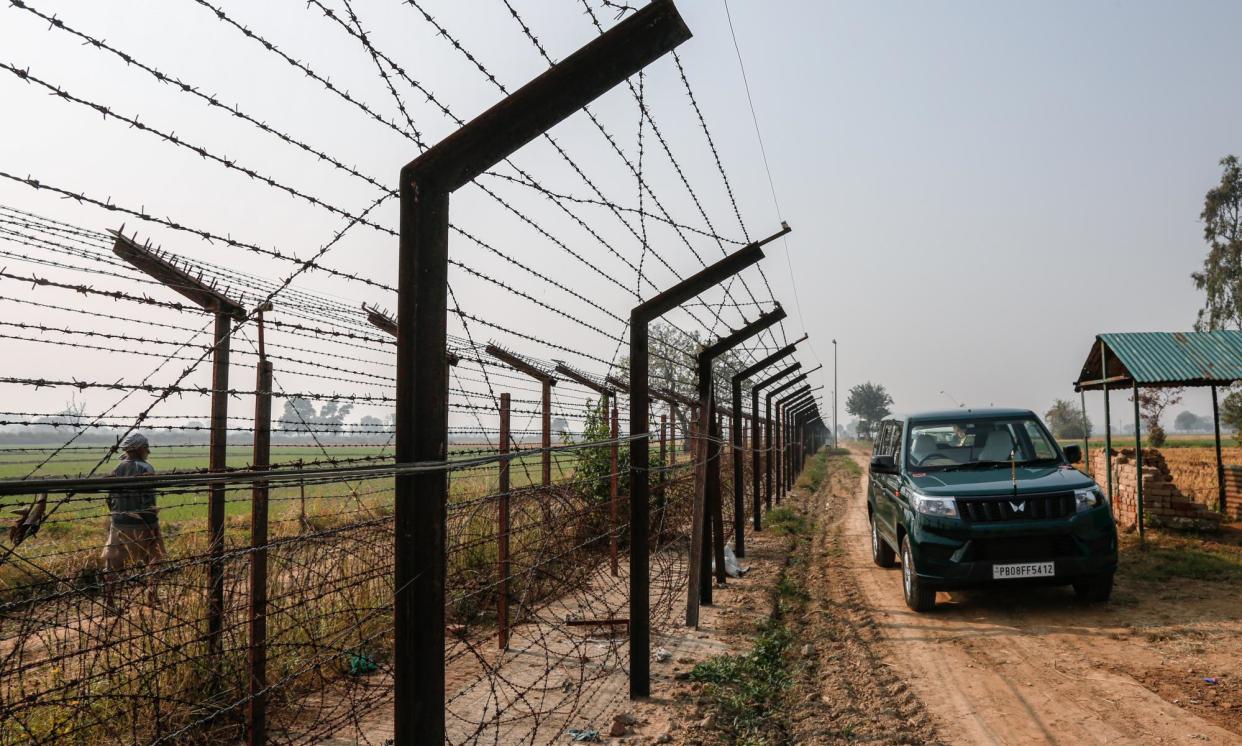Wave of drug-carrying drones flying into India from Pakistan, officials say

Indian border security have said they are battling an unprecedented “drone menace” infiltrating the border with Pakistan, fuelling the drugs crisis in the state of Punjab and raising serious security issues.
Officials from India’s border security force (BSF) in the border state of Punjab told the Guardian they had intercepted 90 drones from Pakistan so far in 2023, the highest on record. They said the number was “increasing every month”.
Most carried consignments of opium and heroin, likely to have come from Afghanistan, but some have dropped weapons, including pistols and Chinese-made assault rifles.
The drones, some known as hexacopters, which are up to 8ft wide and have high-resolution cameras attached, have been detected as far as 12km inside India’s border. The drugs are often carried in small sacks or Coca-Cola bottles.
Given the longstanding animosity between the two nuclear-armed neighbours, who have gone to war four times, Indian border officials said the growing number of drones coming over from Pakistan – using increasingly advanced technology – presented a significant security risk.
“Anything which does not have a legitimate entry into India is a security challenge for us,” said Atul Fulzele, the inspector general of BSF in Punjab. “Apart from use of drones for drugs, there are instances where drones have been found dropping weapons and it has potential to cause damage. We have to be really very watchful.”
Smuggling between Pakistan and India has gone on for decades, with everything from camels and carrier pigeons to human traffickers and underground pipes being used to ferry drugs and other goods across the heavily guarded border. However, since the first drone was spotted in Punjab in 2019, BSF officials said drones had become “the main modus operandi of trafficking drugs” from Pakistan. In some weeks, five or six drones have been intercepted.
BSF said drones were responsible for about 60% of the drug-smuggling in the state in 2023, driving up trade significantly, as well as adding a “new dimension” to protecting the security of India’s border.
“We used just to be focused on land, but this aerial domination is a new domain for us and it is indeed a challenge,” said Fulzele. “But I believe we will be able to contain this drone menace by next year.”
In green rice paddy fields adjacent to Punjabi village of Attari, 2km from the border with Pakistan, BSF officers took the Guardian to the site where a drone carrying 5kg of heroin had been brought down the day before, after a tip-off.
“Most of the drones have been seized from this area,” said one BSF officer, pointing to the surrounding farms. “We have found many, many drones here and many, many drugs. They come 24 hours. Of course it’s a big concern for us but we are working with police and are successful in catching these drones when they come.”
The officer said they had no communication with their counterparts over the border but given the growing scale of the infiltration, they suspected Pakistan officials were turning a blind eye. As drone technology becomes cheaper and more accessible to procure, the problem is accelerating. BSF said most drones they seized were made in China. Pakistan was contacted for comment.
In another area, backing directly on to the India-Pakistan border fence, an expanse of wheat fields was described by the BSF as a “regular dropping zone”.
“It’s happening in every village area along the border in Punjab, and also in Rajasthan,” said the BSF officer. “We have various methods to keep a check on it. Sometimes we shoot them down, sometimes we use anti-drone technology and we also have sources who give us tip-offs and have helped us identify the main dropping zones.”
However, they said they were battling increasingly sophisticated technology. Where previously, drones could often be detected through noise or the visibility of their lights, models that fly as high as 1km were being used, as well as near silent mini-drones, they said – both of which are much harder to spot.
There was concern that as the winter set in, bringing foggy conditions and poor visibility, the drones were likely to increase further.
“We have seen the methods evolve just as drone technology is evolving,” said a BSF officer. “Many of these drones have cameras and mid-air they are able to change frequency and direction to evade capture if they detect anti-drone technology. But our methods are exceptional and lately we have been able to catch around 90% of the cases.”
For the locals in Punjab, drones have become a blight on their lives. The state has been battling a long-running drugs problem, particularly among young adults, and the increase in cheap heroin coming over from Pakistan is seen as further fuelling the problem. In Attari, the border village, the problem is so bad a specialist addiction centre has been set up.
Nirmal Singh, a 60-year-old retired army officer living near Attari, described how three days previously he had been sitting on his porch when he saw a drone coming towards his fields. “We could see the blinking lights of the drone,” he said. “It came very near my house and I saw that it dropped something. It was a Pepsi bottle which the police later found was stuffed with drugs.
Singh added: “We are very scared by this. We worry these drones will not stop at drugs. If they start sending weapons or explosives, that would be an easy way to foment trouble here.”


